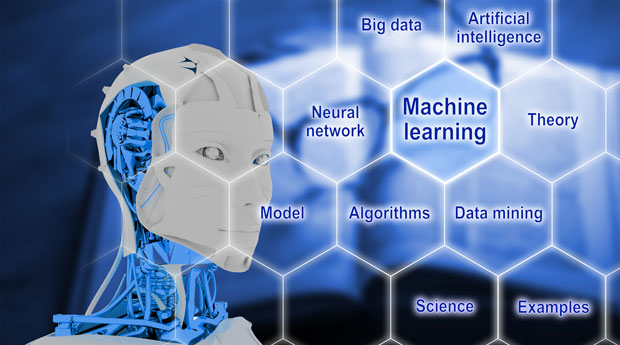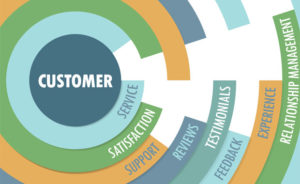At some point, the discussion about artificial intelligence and sales is going to mature. Too many people still think AI for sales will resemble C-3PO, a bumbling assistant that gets in the way more often than not, or the Hal 9000, subverting the sales process in ways that endanger the very existence of the sales person.
As the discussions mature, and as people learn more about the somewhat arcane inner workings of AI, the reality is becoming clearer: how AI will impact sales and sales people is… complicated.
That’s mostly because the teaching of these systems — or “training,” in the AI vernacular — is done by subjecting the systems to large amounts of data. We’ve been trained by science fiction to think that all the data in the world is contained in that system — but that isn’t really the case. The data used for training must be focused on the objectives of the AI system — and that depends on humans selecting the right data.
Defining the Terms
To understand how that works, you need to understand the terminology. “Artificial intelligence,” “machine learning” and “deep learning” often are thrown about carelessly, which contributes to the general confusion about the technology.
To put it concisely, “artificial intelligence” simply refers to a machine that uses the same characteristics as human intelligence. “General AI” is the sci-fi image of the starship Enterprise’s seemingly all-knowing computer, and that is still a long way off. But “narrow AI” — artificial intelligence targeted at a discrete set of data aimed at helping people in specific roles — already plays a role in our lives.
Early AI was entirely hand-coded, with a long series of “yes-no” decision trees. “Machine learning” offers something different: the ability to use algorithms to parse data, learn from the data, and make deterministic predictions from the data. In other words, ML combines data with algorithms — in large volumes — to “train” the system to teach itself on an ongoing basis.
The next level, and the place real breakthrough work is taking place, is “deep learning.” Complex sets of algorithms make a series of many decisions about data, assigning a weight to each input. At the end of the process, they draw a conclusion based on the weightings of those decisions. The term “deep” comes from the depth of the neural networks, which must be substantial in order to simulate what human brains can do automatically and on the fly.
A DL system can learn, build on its past decisions, and become more accurate as it acquires and processes more data. To train it, data is introduced into the first layer of the network, and individual neurons assign a weighting to the input — how correct or incorrect it is — based on the task being performed. If the algorithm informs the neural network that it was wrong, the error is bounced back through the network’s layers. It then must consider other attributes and weigh the attributes examined at each higher or lower layer. Then it guesses over and over again until it has the correct weightings and gets the correct answer practically every time.
Once the neural network is properly weighted, it will have become a massive database filled with an enormous amount of weights and thresholds — the vast majority of which are not needed for any one request.
Digging through it all would slow performance to a crawl, so the network instead uses inference: taking smaller batches of real-world data and quickly coming back with the correct answer (and doing so repeatably), in a way that is simplified, compressed and optimized for runtime performance.
Over time, these models and applications should become smarter, faster and more accurate, and training will grow less cumbersome.
With this in mind, your organization already can identify the people who will play key roles in making AI a success for your sales department.
Your CIO and CFO
AI systems, with their massive data requirements, will depend on a flexible, scalable storage infrastructure. The training data is an enormous set of information, and the AI system itself will generate a tremendous amount of data that needs to be stored, managed, and fed back into the system to keep it current.
Your CIO will have to be prepared to build and manage what is known as “a scale-out storage infrastructure” — that is, an infinitely scalable system that can grow easily in response to needs. Object storage is a good option for this, since it’s scalable and can be managed as a single namespace even when its nodes are spread all over the world.
If you’re going to build this infrastructure — and bring on new AI technologies — it also will be necessary for your CFO to understand your investments and be OK with investments in tools — both hardware and software — to deal with an explosion in data.
Your Head of Sales Operations
Sales Ops increasingly is becoming the keeper of insights pulled from data via analytics. It’s becoming sales ops’ job to know which data about sales is the most important, and how to use it. That puts them in an ideal position to know the best sets of data to use to train the AI system.
Data from all aspects of sales — from CRM data to compensation management to sales training and enablement to configure price quote (CPQ) — can and should be part of what’s used for training AI. The key question is, what do you want AI to do for your sales team?
It may be a better bet to use a narrow set of data at first to deliver specific results than to try and build some all-knowing sales AI. If that’s the decision, then it’s up to sales ops to figure out the best data sets to provide for the training process.
Your Salespeople
AI does not sell by itself. People still buy from people. Your sales team ultimately will be the ones who determine the success of any AI efforts. Will they know the right questions to ask the system to generate useful insights? Do they have the skills to weave information pushed forward by AI into the conversations they have with customers? At a more basic level, will they have the desire to adopt the system, or will they simply ignore it?
Salespeople have proven adept at ignoring powerful sales technology in the past; if members of your team have internalized that skepticism of technology, you’ll need to work hard to make sure they aren’t left behind.
Furthermore, once they are using the system, salespeople have to maintain communications with sales ops or whoever is put in charge of the AI application to help eliminate wrong answers when they sneak through — and they invariably will.
A sales team that has to work around the occasional mistaken recommendation and doesn’t feel sufficiently engaged to help remedy the situation is likely to stop using AI entirely.
The most important attribute of the sales team ultimately centers on sales talent. Will your salespeople know how to ask for the right data from AI, and then will they know how to present that data to the customer in a way that advances the sale? Sales is still, ultimately, a human interaction. AI merely provides key advice along the way.
Don’t make the mistake of believing that the individuals on the AI vendor or integrator’s team are the make-or-break people for your sales AI. The reality is that AI will challenge your sales team’s communication skills, and force people to partner in ways that they may not yet be comfortable. To deliver success, artificial intelligence may well depend on your team’s natural intelligence.

























































Social CRM
See all Social CRM